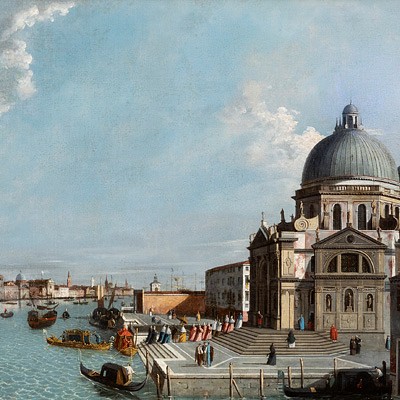ADOLPHE PIERRE LELEUX (Paris, 1812-1891). "Andalusian scene", 1843. Oil on canvas. Signed and dated in the lower left corner. Slight overpaints an
Lot 63
About Seller
Setdart Auction House
Carrer Aragó 346
Barcelona
Spain
Setdart Subastas was born in 2004 and is currently the first online art auction in Spain with solidity, prestige and reliability guaranteed by our more than 60,000 users. Setdart has a young, dynamic and enterprising team ready to successfully manage the purchase and sale of art works through custom...Read more
Estimate:
EUR€30,000 - EUR€35,000
$32,258.06 - $37,634.41
Absentee vs Live bid
Two ways to bid:
- Leave a max absentee bid and the platform will bid on your behalf up to your maximum bid during the live auction.
- Bid live during the auction and your bids will be submitted real-time to the auctioneer.
Bid Increments
| Price | Bid Increment |
|---|---|
| EUR€0 | EUR€10 |
| EUR€200 | EUR€25 |
| EUR€500 | EUR€50 |
| EUR€1,000 | EUR€100 |
| EUR€3,000 | EUR€200 |
| EUR€5,000 | EUR€500 |
| EUR€10,000 | EUR€1,000 |
| EUR€20,000 | EUR€2,000 |
| EUR€50,000 | EUR€5,000 |
About Auction
By Setdart Auction House
May 18, 2021
Set Reminder
2021-05-18 09:30:00
2021-05-18 09:30:00
America/New_York
Bidsquare
Bidsquare : Classics XIX and XX
https://www.bidsquare.com/auctions/setdart-auction-house/classics-xix-and-xx-6961
The next 18th May there will be a 19th and 20th Century Classics Auction at Setdart.com There will be a select repertoire of important artists such as Carlos Cruz Diez, Luis Feito, Joan Miró, Fernando Botero, Josep Llimona, Salvador Dalí among others. Setdart Auction House sofia@setdart.com
The next 18th May there will be a 19th and 20th Century Classics Auction at Setdart.com There will be a select repertoire of important artists such as Carlos Cruz Diez, Luis Feito, Joan Miró, Fernando Botero, Josep Llimona, Salvador Dalí among others. Setdart Auction House sofia@setdart.com
- Lot Description
ADOLPHE PIERRE LELEUX (Paris, 1812-1891). "Andalusian scene", 1843. Oil on canvas. Signed and dated in the lower left corner. Slight overpaints and restorations. 19th century frame with slight damage. Measurements: 131 x 98.5 cm; 148 x 117 cm (frame). Spain and England maintained a special relationship throughout the 19th century. The valuable support given by Great Britain to the patriotic fervor against the French invader, led the Spaniards to look with sympathy to the British. The same feeling was felt by the English, whose painters and writers sought in Spain the most authentic romantic idealism through its natural landscapes not yet altered by the Industrial Revolution. The progress in communications turned Spain into an exotic destination, but at the same time close, for the young English painters who rejected the industrial bourgeoisie and the poverty of spirit that was plaguing the great cities in constant growth. The Moorish Andalusia, the bandit, the obscurantist Church, the handsome bullfighter and the maja, the lady with mantilla, the barefoot children, the beggar full of rags, Cervantes' gitanilla.... Paintings like the one we present here bring us closer to the essence of romanticism, to the exaltation of the soul as a response to an era that placed the cloth on the altar of Reason. A group of popular types dressed in Andalusian style dance at the gates of a farmhouse, playing stringed instruments whose sounds encourage one of them to dance. The intense sun determines a work of fine workmanship in which the drawing is subordinated to the color, of brownish tones in perfect harmony. Finally, a character protects his head from the sun with a large-brimmed Cordovan hat. A self-taught painter, Pierre Leleux exhibited his work for the first time at the Paris Salon of 1835. He broadened his pictorial training by learning the art of engraving, working in the studio of Alexandre Vincent Sixdeniers. After his move to Great Britain in 1838, Leleux began to paint numerous genre paintings inspired by the Breton countryside, an aspect that led him to adopt the nickname "Leleux Le Breton". His particular style, halfway between realism and romanticism, grew during his travels to Algeria, Spain, Morvan or the Pyrenees, where he captured on canvas the most deeply rooted customs of these places, the delightful rhythm of life of their inhabitants and the most picturesque places around them.
- Shipping Info
-
In-House Shipping
-
- Buyer's Premium



 EUR
EUR CAD
CAD AUD
AUD GBP
GBP MXN
MXN HKD
HKD CNY
CNY MYR
MYR SEK
SEK SGD
SGD CHF
CHF THB
THB
















